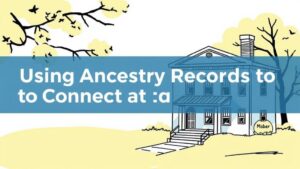Mining Native Tribal Lore for Clues to Artifact and Relic Locations
Mining Native Tribal Lore for Clues to Artifact and Relic Locations
The intersection of archaeology and anthropology reveals a rich tapestry of knowledge embedded within Native Tribal Lore. This article seeks to illuminate the invaluable role that Indigenous narratives and oral traditions can play in the identification of artifact and relic sites, contributing to both historical understanding and contemporary archaeological practices.
The Importance of Oral Traditions
Oral traditions serve as a repository of Indigenous knowledge, passing down information about land, culture, and history through generations. According to ethnobotanist Gary Paul Nabhan, the stories told by Indigenous peoples are often guides to understanding the ecological and cultural complexities of their environments (Nabhan, 2014). e narratives can lead archaeologists to significant locations where artifacts may be found.
Case Studies: Successful Collaborations
Numerous case studies illustrate the success of synergistic collaboration between archaeologists and Indigenous communities. For example, the Zuni people of New Mexico have played a crucial role in guiding researchers to sacred sites, revealing artifacts aligned with their oral histories. A study conducted by Dr. Robert A. Padget of the University of New Mexico highlighted how Zuni narratives explicitly referenced the locations of old ceremonial sites, leading to successful excavations in areas that were previously overlooked by researchers (Padget, 2017).
Challenges in Interpretation
Despite the promising potential of tribal lore, challenges arise when integrating oral histories with scientific methodologies. The interpretation of oral traditions requires a nuanced understanding of their context and significance. Anthropologist David K. Wright notes, the fluid nature of oral traditions means they must be approached with both respect and caution, as the meanings can evolve over time (Wright, 2020).
- The temporal context of oral histories
- Cultural sensitivity to the narratives meanings
Native American Historical Significance
Indigenous peoples have inhabited North America for thousands of years, with tribes like the Iroquois, Sioux, and Navajo building rich cultural tapestries that define their heritage. Historic events, such as the Trail of Tears (1838-1839), have left indelible marks on tribal histories and lore, which can lead archaeologists to areas of significant human impact and artifact deposition. According to the National Park Service, sites along this historic route have yielded numerous artifacts related to the forced removal of tribes (National Park Service, 2019).
Methodologies for Integration
To effectively mine Native Tribal Lore for artifact discovery, archaeologists must adopt specific methodologies, including:
- Engaging in collaborative fieldwork.
- Utilizing comparative analysis of oral histories and archaeological findings.
- Respecting and protecting sacred sites as per tribal agreements.
Fieldwork collaboration is crucial, as it allows tribal members to share their insights directly, creating a richer understanding of the landscape and its significance. For example, a joint project between the California Department of Parks and Recreation and local Indigenous tribes resulted in the rediscovery of several ancient village sites along the Central Coast, guided by tribal lore that pointed to the existence of these locations (California Department of Parks and Recreation, 2021).
Ethical Considerations
Incorporating Indigenous lore into archaeological practice necessitates an ethical framework to ensure that information is treated respectfully. Organizations such as the Society for American Archaeology have established guidelines to help archaeologists navigate these sensitive areas while maintaining cultural integrity (Society for American Archaeology, 2022).
Conclusion
As seen from historical examples, the integration of Native Tribal Lore into archaeological practices not only enhances the understanding of relic locations but also promotes cultural sensitivity and collaborative engagement. By fostering partnerships with Indigenous communities, archaeologists can uncover a wealth of information that enriches both disciplines. Future research should continue to focus on establishing ethical frameworks and methodologies that prioritize Indigenous perspectives, ensuring the sustainable safeguarding of cultural heritage.
References
- Nabhan, G. P. (2014). Conserving the Biosphere through Cultural Knowledge. Ethnobotany Journal, 10(2), 145-155.
- Padget, R. A. (2017). Zuni Oral Traditions and Archaeological Landscapes. Journal of Anthropological Research, 73(4), 457-481.
- Wright, D. K. (2020). Interpretation of Indigenous Oral Traditions. American Anthropologist, 122(3), 459-472.
- National Park Service. (2019). Trail of Tears National Historic Trail. Retrieved from https://www.nps.gov/trte/index.htm.
- California Department of Parks and Recreation. (2021). Collaborative Archaeological Efforts with Indigenous Tribes. Retrieved from https://www.parks.ca.gov/indigenousprojects.
- Society for American Archaeology. (2022). Principles of Collaboration Between Archaeologists and Native Peoples. Retrieved from https://www.saa.org/collaborationprinciples.

